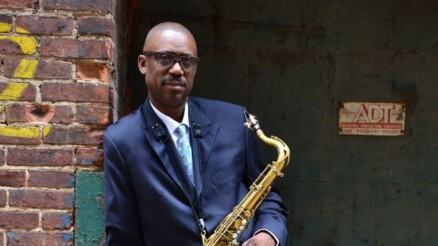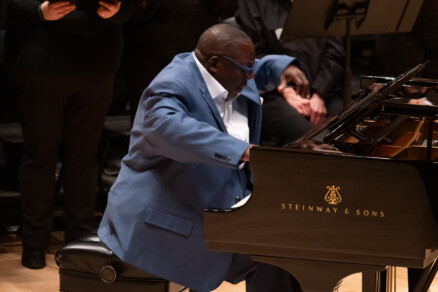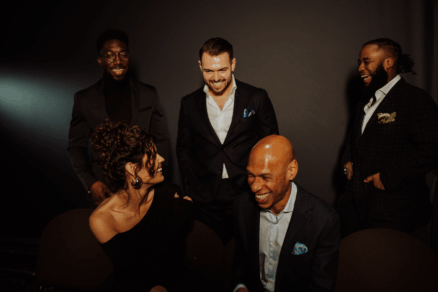Interview | Gary Burton discusses a life of discovery

by Giovanni Russonello
Editor-in-chief
Gary Burton seems magnetically pulled toward the road less travelled. Jazz is a music of experimentation, of asserting personal freedoms through the exploration of new creative territory. And for Burton, there’s more to that experimentation than just improvising and composing. He started his career in 1960 as a sideman for a country-western guitarist who wanted to make a foray into jazz. Around that time, Burton introduced the four-mallet technique into the vibraphone’s technical repertoire – doubling the instrument’s harmonic potential. Two years before Miles Davis started recording Bitches Brew in 1969, the commonly accepted launching point for jazz-rock fusion, Burton made Duster, an album blending jazz, American heartland guitar music and psychedelic rock. Since then, he has continued to forge ahead, teaming up with fellow innovators Chick Corea, Pat Metheny, Roy Haynes and others.
This year, the New Gary Burton Quartet, featuring 23-year-old guitar phenom Julian Lage, released its first album, Common Ground. It’s a sharp effort that punches and glides, with a lush aesthetic centered on the smooth machinery that is Burton and Lage’s relationship. This Friday and Saturday, the quartet will be at Blues Alley. In anticipation of the show, Burton talked to me about discovering the four-mallet technique, finding fame as a 17-year-old kid and what keeps him going musically these days.
CapitalBop: You’re thought of as a pioneer of jazz-rock fusion. Nowadays, people seem to write off that genre as kind of a movement that came and went, but it seems to me that a lot of the jazz we hear today is in fact still a fusion of jazz with non-jazz influences.
Gary Burton: Yes, that’s true. There was a period where jazz fusion meant an attempt to sort of sound like an instrumental rock band. But the broader concept is to bring in a greater range of influences.
When I was starting my band in ’67, I made several observations as I tried to decide, “Well, what should my band be?” One of them was that the jazz world was very narrow. Everyone was playing the same standard songs a lot. There were about 100 to 200 show tunes that everybody seemed to know. We were all re-recording them and re-arranging them over and over again. And everything was in syncopated swing time, in 4/4.
Meanwhile, I’m listening to other kinds of music that I had grown to love – classical music that I was introduced to when I went to college and then the new rock music that had arrived. A typical Beatles record, for instance, was this really eclectic collection of things. One track would be something with an Indian sitar on it, the next would have a string quartet, the next piece would have penny whistles blowing in the background. I loved this eclectic mix. When jazz people made a record, every tune more or less sounded the same. The only difference was in tempo…. My goal was to bring in country, rock, classical, Latin, tango. Anything that I could relate to, we would try to write original songs using those elements – and in some cases even do the actual rock song itself….
By ’69, my band was no longer the only one doing jazz-rock fusion…. Miles [Davis] came out with Bitches Brew in ’69, using more electric instruments and playing more free improvisation. And then the Mahavishnu Orchestra arrived [in 1971], John McLaughlin’s band. That was when it became an instrumental rock sort of thing. Synthesizers were new but starting to arrive, and it took on a narrower identity for about a decade. And as you say, it came and went. But the concept of having a much broader palette stayed. On my newest record, there’s a piece on there that’s clearly a tango, something else is sort of African-sounding in nature, something else is classical-sounding. That has now become normal in jazz, which to me gives us a lot more to work with.
CB: Is there a moment you can point to when you remember having tried for the first time the four-mallet technique?
GB: I wasn’t the first person to mess around with playing with mallets; it was happening back in the 1920s, with xylophone players. Red Norvo made some records on the xylophone back in those days with pretty impressive four-mallet playing. But it had kind of gone out of fashion over the years, and no one was doing it on the vibraphone…. I started when I was six years old, and at first I didn’t really think much about playing with four mallets because the players that I’d heard on record all played with two.
I grew up in a very small, rural farm town in rural Indiana, and I played alone most of the time. [The sound] was too empty, I wanted it to sound more complete. I wanted harmony. And I found that I could play slow pieces – ballads and things – with four sticks and manage it alright. So I started out doing that. This was about the time I was midway through high school…. I’d assumed there were other players out there doing it who were better than I was. It came as a surprise when I came to the East Coast to go to college and I started getting involved in the music scene. The idea of playing with four mallets was kind of a new thing, and I got credit for pioneering it.
CB: The first jazz record that you recall hearing was a Benny Goodman 10”, right?
GB: That’s true, but I have no recollection of which one it was…. What got me was how exciting the rhythm and the energy was on this thing. I had never heard people improvising before to that extent, and without realizing it I had been starting to improvise myself: making introductions and endings and rearranging piano sheet music so I could play it on the vibes. So when I heard this much more extensive example of improvising, I related to it very much. I said, “This is fantastic, I really want to do this.” So I immediately started looking for jazz records to see what I could find. And at that time – we’re talking 1955, ’56 – it was records by Dave Brubeck, Art Blakey & the Jazz Messengers, the Modern Jazz Quartet. It was kind of limited. The town with the nearest record store was an hour away, and on Saturdays my father would drive me down there and I would look and see if they had any new jazz records in stock.
CB: You became relatively famous very young. Talk about how you got your start.
GB: My first break to get into the business came when I was 17. A guitar player in Nashville, Hank Garland, who was a famous country musician but had become quite a talented jazz player, wanted to make a jazz record. He was particularly looking for a vibraphone player to be on the record, and there were none in Nashville, it being a country music town. Someone recommended me; I lived a few hours’ drive from Nashville when I was growing up in southern Indiana, right along the Kentucky border….
I went down to Nashville and met Mr. Garland…. He suggested that I move to Nashville for the summer and we would play at a local club on weekends and we would make this record. And that’s exactly what I did, and not only was that my first record, but I got my own record contract offered to me as well. Chet Atkins, who ran the RCA division in Nashville, became a fan and would come and hear us play on weekends. So at the end of the summer, I had a record contract when I went off to college. That really gave me a very early start to my career.
CB: You’ve played with guitarists frequently ever since.
GB: I discovered from playing with Hank that the blend of vibes and guitar was a very practical instrumentation for a small group. Each instrument has its own separate sound, but yet when you play in unison together, they sort of blend well and become a big, nice, fat-sounding super-instrument, in a way. A combination of the two. It gives you some nice variety of sounds when you have a small group. I just kept coming back to the guitar as soon as I was in a position to start my own band. In 1967, after I left Stan Getz, I went back to playing with guitar again….
I met Julian [Lage] 10 years ago, when he was 12 years old. I saw him on a television show, and he impressed me so much, just in the 20 seconds that he was featured, that I actually called up and found out how to reach him. I called him and his parents and arranged for a small, low-key gig that was going to be near his house in California. I said, “This’ll be fun, I’ll play with this young kid.” He did such a good job that I began hiring him whenever I could find a casual setting or circumstance. His dad and he would fly out to Pittsburgh, or wherever it was, and we would play these occasional gigs together. By the time he was 15 or 16, we were recording together and touring some. Then I lost touch with him for a few years when he went off to college. He finished last year and that was what kind of gave me the idea that it would be nice to reconnect with Julian and do some more playing with him….
CB: Who do you listen to these days?
GB: More than anything I listen to classical music. [It’s been that way] for a long time. That for me is recreational. I take a break from my own music and the music I’m familiar with and go off and listen to Chopin piano pieces and that sort of thing. I do listen to a lot of early jazz – jazz of the ’50s, ’40s and very early stuff. I listen to Satellite Radio jazz because it’s a nice cross-section of a little bit of everything…. I listen frequently in the car. It’ll often have artists I haven’t heard before. And of course, I listen to the records of my friends – if Chick [Corea] or Pat [Metheny] has a new record, I’ll check those out. I have a personal interest in what they’re doing.
CB: Is there a new record that has surprised you or caught you?
GB: Well, Julian’s records have surprised me, because I knew him as a fairly straight-ahead player over the past decade of playing with him. But when he’s off doing his own thing, it’s this really interesting mix of Americana, in a way – folk and string band music and jazz and hints of classical. You’ve got this band with a violin and a cello and no drummer. Pretty daring, it seems to me, but he has a real vision of what music he wants to call his own. I’m enjoying watching this evolve.
—
The New Gary Burton Quartet appears at Blues Alley this Friday and Saturday, for 8 and 10 p.m. sets both nights. Tickets are $35, and there is a $10 food and drink minimum. More information is available here, and tickets can be purchased here.
Blues Alley, DC, DC jazz, Gary Burton, Georgetown, innovation, jazz, Julian Lage, pioneers, Washington




